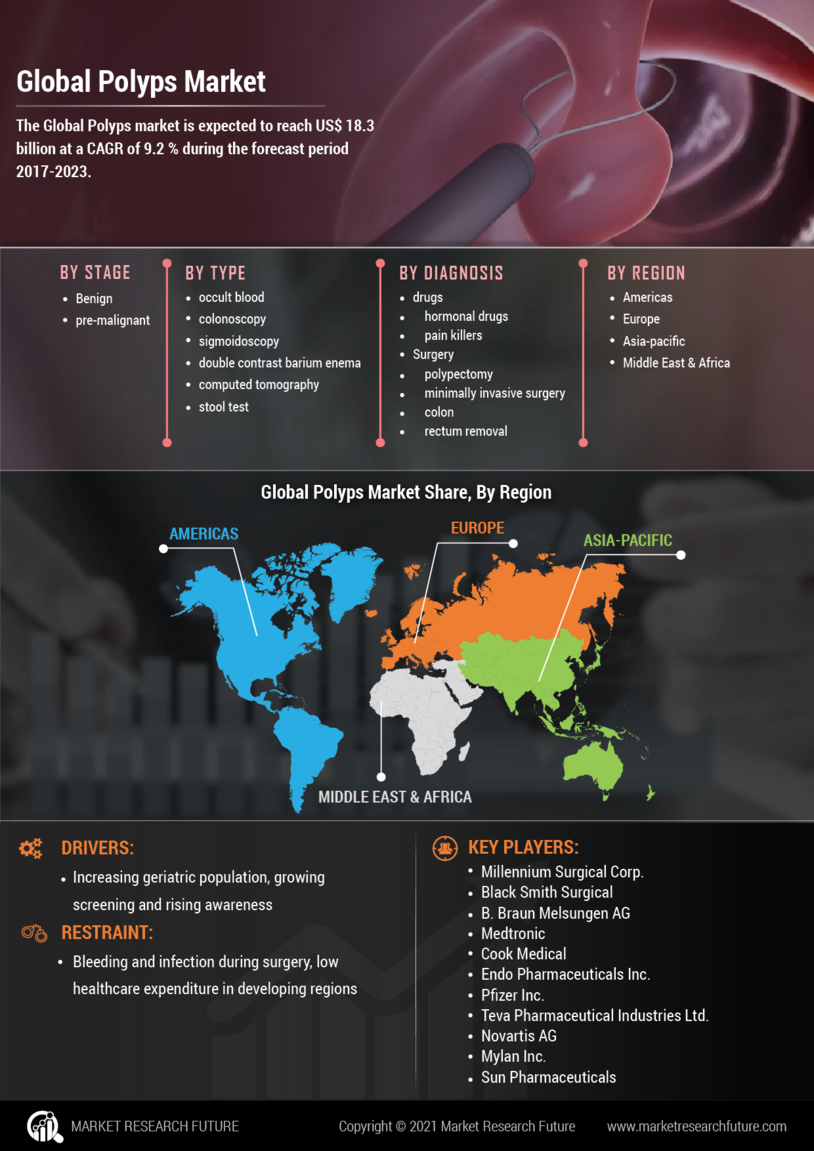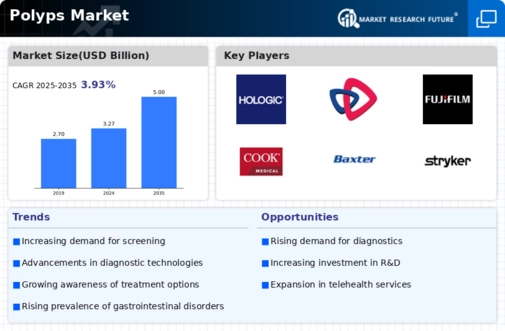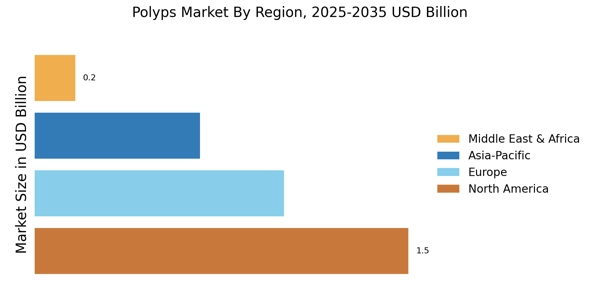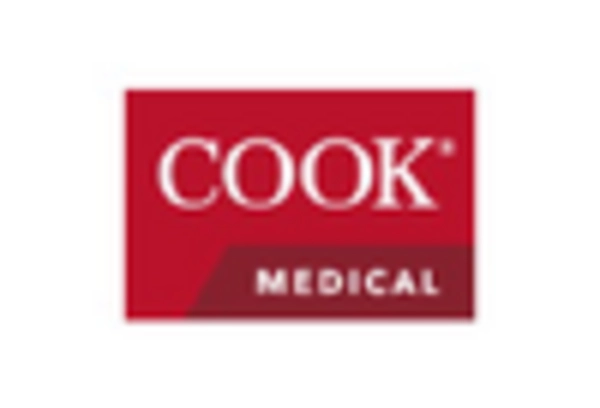North America : Market Leader in Innovation
North America is the largest market for polyps treatment, accounting for approximately 45% of the global market share. The region's growth is driven by advanced healthcare infrastructure, increasing prevalence of colorectal cancer, and rising awareness about early detection. Regulatory support from agencies like the FDA further catalyzes market expansion, ensuring the availability of innovative treatment options.
The United States is the primary contributor, with significant investments in research and development from key players such as Medtronic, Boston Scientific, and Johnson & Johnson. The competitive landscape is characterized by a focus on minimally invasive procedures and advanced technologies, enhancing patient outcomes and driving market growth. The presence of established healthcare systems supports the adoption of new treatments, solidifying North America's position as a leader in the polyps market.
Europe : Emerging Regulatory Frameworks
Europe is the second-largest market for polyps treatment, holding around 30% of the global market share. The region's growth is propelled by increasing healthcare expenditure, a rising geriatric population, and advancements in medical technology. Regulatory frameworks, such as the European Medicines Agency's guidelines, are fostering innovation and ensuring patient safety, which is crucial for market expansion.
Leading countries include Germany, France, and the UK, where healthcare systems are increasingly adopting advanced treatment modalities. The competitive landscape features major players like Olympus Corporation and B. Braun Melsungen AG, who are investing in research and development to enhance their product offerings. The focus on early detection and preventive care is driving demand for innovative solutions, positioning Europe as a key player in the polyps market.
Asia-Pacific : Rapidly Growing Market Potential
Asia-Pacific is witnessing rapid growth in the polyps market, accounting for approximately 20% of the global share. The region's expansion is driven by increasing healthcare access, rising awareness of colorectal health, and a growing middle-class population. Government initiatives aimed at improving healthcare infrastructure and preventive care are also significant growth catalysts, enhancing market dynamics.
Countries like Japan, China, and India are leading the charge, with Japan being a key player due to its advanced healthcare system. The competitive landscape is evolving, with both local and international companies, including Cook Medical and Conmed Corporation, striving to capture market share. The focus on innovative treatment options and patient-centric care is shaping the future of the polyps market in this region, making it a vital area for investment and development.
Middle East and Africa : Untapped Market Opportunities
The Middle East and Africa represent an emerging market for polyps treatment, holding about 5% of the global market share. The growth in this region is driven by increasing healthcare investments, rising awareness of colorectal diseases, and improving healthcare infrastructure. Government initiatives aimed at enhancing healthcare access and quality are also contributing to market growth, creating opportunities for new entrants and established players alike.
Countries like South Africa and the UAE are at the forefront of this market, with a growing number of healthcare facilities adopting advanced treatment technologies. The competitive landscape is characterized by a mix of local and international players, including Hologic, Inc., who are focusing on expanding their presence in this region. The emphasis on preventive healthcare and early diagnosis is expected to drive demand for innovative solutions, making the Middle East and Africa a promising market for polyps treatment.


















Leave a Comment